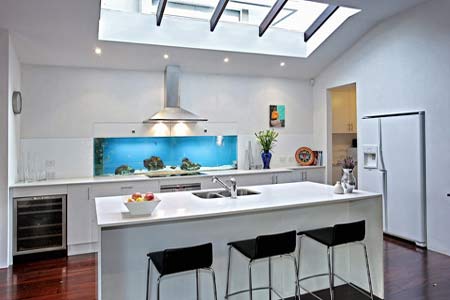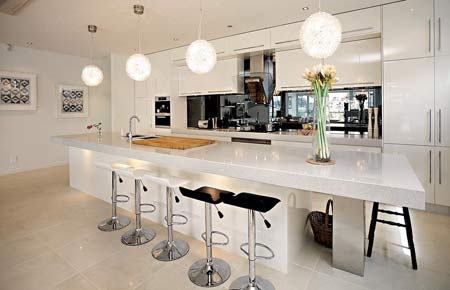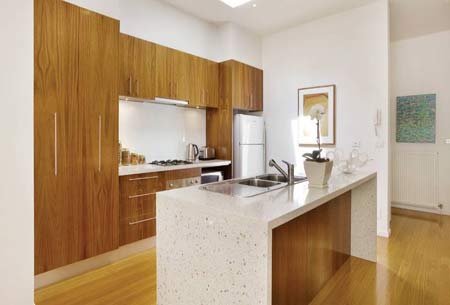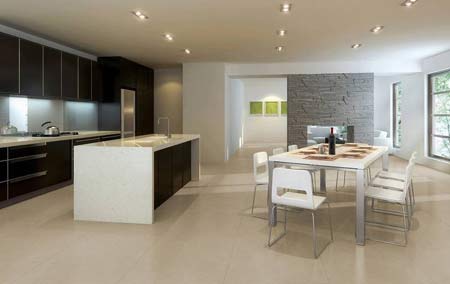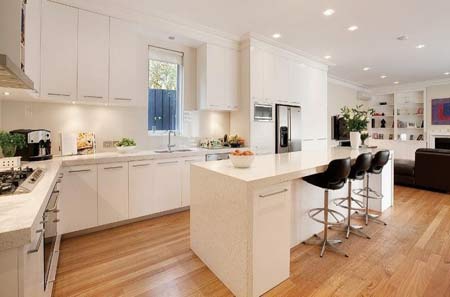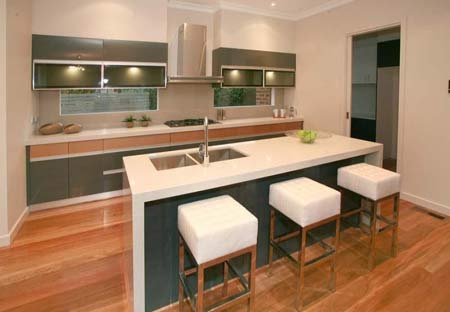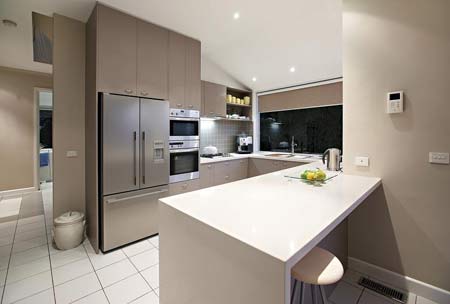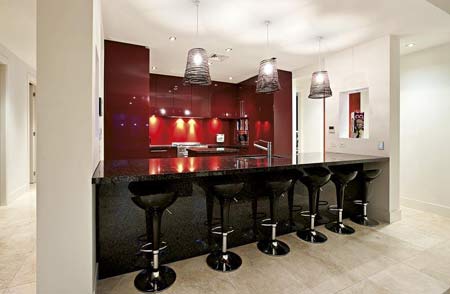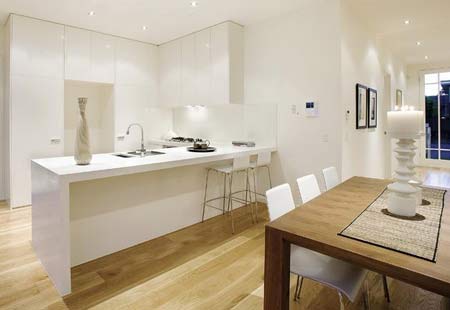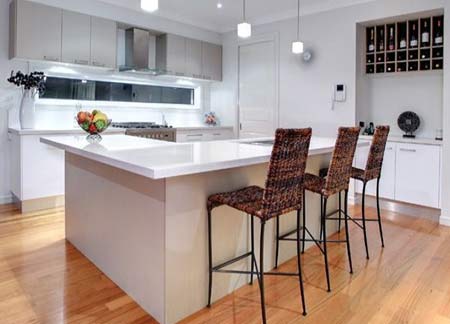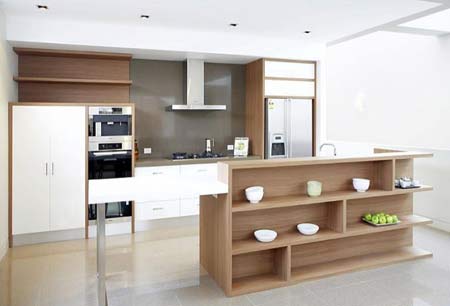The kitchen island makes a comeback
Considered an integral part of modern kitchen design, the kitchen island has been transformed into a well-designed and practical element in a kitchen
Previously considered old-fashioned, today's modern kitchen islands serve as a functional element of kitchen design. In an open plan kitchen-dining area, the kitchen island can provide countertop and seating space for informal dining, opening up valuable floor space.
When designing a new kitchen installation think out of the box. A kitchen island can easily accommodate a large kitchen sink and taps. Bear in mind that this type of installation is best done when installing a new - or completely revamping an old - kitchen in order to allow for plumbing and water services.
While many homeowners dislike the idea of Installing an island sink and prefer to have dirty dishes out of sight, small prep sinks can easily be installed. These sinks also require plumbing, however, depending on the specific arrangement of your kitchen.
Many people also dislike the idea of 'sink mess' being on view as much as it can be with an island sink. This mostly applies to main cleanup sinks where dirty dishes are stacked before being washed – small prep sinks don’t seem to create as much mess. A raised area, eating counter or ledge at the back of the island can hide the sink mess from view, and provide a useful location for electrical outlets, without cutting off the views in and out of the kitchen.
Now becoming a focal point of most kitchens, there is a wide range of material and surface options that you can consider when planning a kitchen revamp.
In an open plan setting, one of the best locations for an island is between the kitchen and dining or living area. There is usually enough space in a room like this to make an island practical without intruding on valuable floor space.
Since the adoption of the kitchen " triangle principle" in the 1950’s, we have seen the introduction of many modern appliances and the work triangle, while not completely absent in the design and layout of a kitchen, is not enough to describe how best to create a truly practical and functional kitchen layout.
With the addition of a centre zone - or kitchen island - the kitchen can be broken into three major areas:
- Cooking
- Preparation
- Cleanup
Creating an island to serve as a work and eating area is as easy as having an overhanging countertop at the right height. Ensure that there is sufficient clearance behind chairs or stools. If there are appliances on the wall behind the chairs or stools, you need even more space to allow for appliance doors to open and allow easy access to appliances. The best kitchen renovations will be able to create a beautiful island for your home that works with your space, allowing you to create that kitchen you’ve always dreamed of.
In the right situation, islands can really improve the layout of a kitchen, providing essential working, storage or seating space. In order to be practical, a kitchen island should incorporate all of what is important to the homeowner, both in style and function.
The choice of material for your island countertop can create a dramatic, formal or casual atmosphere. Choose from a wide range of options such as granite, caesarstone, solid surfacing, Formica laminate or hardwood. Additionally, it's not necessary to have the countertop material match that used on existing countertops. Make a statement by selecting a different but complementary countertop material.
When you are planning your kitchen revamp, consider the space available. If your kitchen is long and narrow, you will want an island that fits into this space. For a small, compact kitchen you will obviously need a scaled-down island.
A kitchen island can easily be designed to provide additional countertop space, essential storage and an informal dining area.
Be clear about the purpose of a centre island, as it acts as a major deciding factor. If merely decorative then special attention should be paid the materials and finishing. However, if the main aim of incorporating a kitchen island is to create an additional storage space, then design for these.

